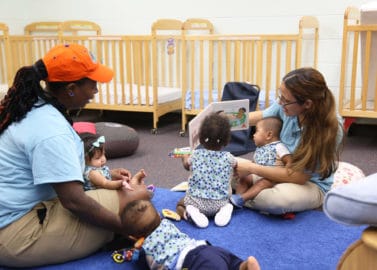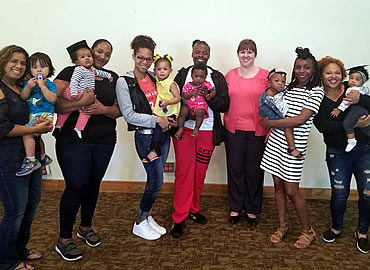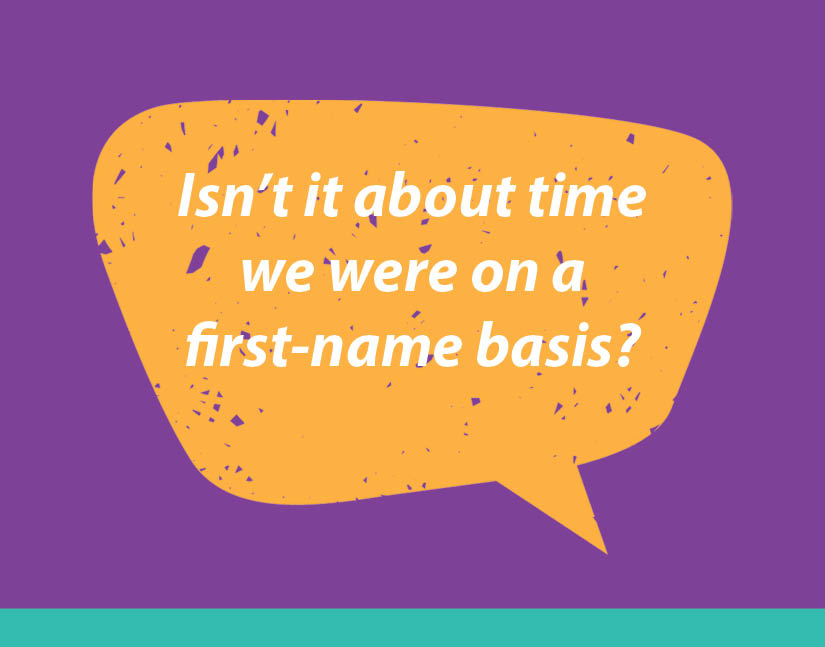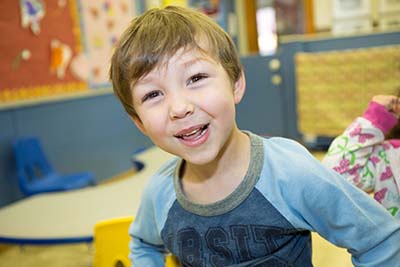This year, we explored many different aspects of interactive talk and early brain development through special webinars, blog posts, and conversations with experts. Here, we’ve highlighted four themes that emerged during 2019:
-
- Increasing high-quality, equitable interactions in early childhood education is an urgent need. In January of this year, we published data from an exploratory subset of infant and toddler classrooms which showed that more than a third of children may spend almost their entire day in language isolation, experiencing just four or fewer talk interactions with a caregiver per hour. The data also revealed large disparities within classrooms in how much conversation each child experienced, which could be arising when children who are dual-language learners do not speak the same language as their teacher.We discussed strategies to address these disparities in a webinar focused on increasing equitable interactions in early childhood classrooms with Trust for Learning and Highscope, trying to better understand the role objective language environment data for teachers could play in boosting equity for historically disadvantaged children.

We also partnered with Teachstone for a webinar exploring how professional development for teachers focused on increasing teacher-child interactions can improve quality. Finally, Lauren Cooper, a speech-language pathologist who works on our program support team, guided an in-depth examination of data-based coaching in ECE in a blog post and a webinar. - Research continues to affirm the brain-building power of adult-child interaction. Last year, three studies linked conversational turns to better brain structure and function in early childhood and to IQ in adolescence. New research published in 2019 has continued to suggest that conversational turns have unique brain-building power during the first three years of life. In particular, a study in Child Development linked language input with structural changes in the brain, finding that children who experienced more conversational turns had greater cortical surface area, and in turn, better reading skills.Additionally, a fascinating new study from the University of East London highlighted that infant and parent brainwaves synchronize when they play together. Another UK team used LENA technology to conduct one of the largest naturalistic home observation studies ever completed, finding that the amount of adult words a child hears is positively associated with the child’s cognitive ability and verbal skills.
- Evidence is increasing that LENA programs work. Our long-time partner Huntsville City Schools conducted the first longitudinal study of LENA Start participants this year, which showed that children whose parents graduated from the program had improved literacy skills two years later. Another school district, Fort Worth ISD, measured higher CLASS scores in early childhood classrooms that used LENA Grow compared to classrooms that didn’t use the program. We’re excited about these results and will continue to share results from additional independent evaluations of LENA programs, including randomized control trials, in 2020.
- Increasing high-quality, equitable interactions in early childhood education is an urgent need. In January of this year, we published data from an exploratory subset of infant and toddler classrooms which showed that more than a third of children may spend almost their entire day in language isolation, experiencing just four or fewer talk interactions with a caregiver per hour. The data also revealed large disparities within classrooms in how much conversation each child experienced, which could be arising when children who are dual-language learners do not speak the same language as their teacher.We discussed strategies to address these disparities in a webinar focused on increasing equitable interactions in early childhood classrooms with Trust for Learning and Highscope, trying to better understand the role objective language environment data for teachers could play in boosting equity for historically disadvantaged children.

- Community partnerships are key to scaling impact for children. Throughout this year, we’ve heard the importance of strong community partnerships echoed from our program sites around the country and around the world. Our partner Calgary Reads in Canada shared with us how their Children’s Reading Place and LENA Start initiative work in tandem, and the Georgia Department of Public Health explained how their recruitment strategy has hinged on teamwork between community organizations. As Providence Talks has expanded to five new cities, we’ve seen each city form strong public-private partnerships to research, implement, sustain, and evaluate programs. Moving forward, this type of collaboration will be crucial to scaling up LENA programs to reach more children cost-effectively.
What have your learnings been this year? Share your thoughts and insights below in the comment box, and let us know if there’s a topic you’re interested in exploring more in 2020.






One Comment on “Understanding how to support early brain development: Four themes that emerged in 2019”
“support from Bloomberg Philanthropies.” Is this the Bloomberg who is running for President? I have been trying
to integrate videos of good face to face interactions between infants to 18 months and their others family members into the “home visits” paid for by the state. Testified at the State House when I heard that our Governor wanted to triple the funding for home visits. They did reduce the number of models used in the state. Population served is defined differently, depending on the agency. Want ALL babies to be served-not just those of low income or those diagnosed at birth. Autism, apraxia, delayed speech/language, etc. are not diagnosed until years later. 🙁